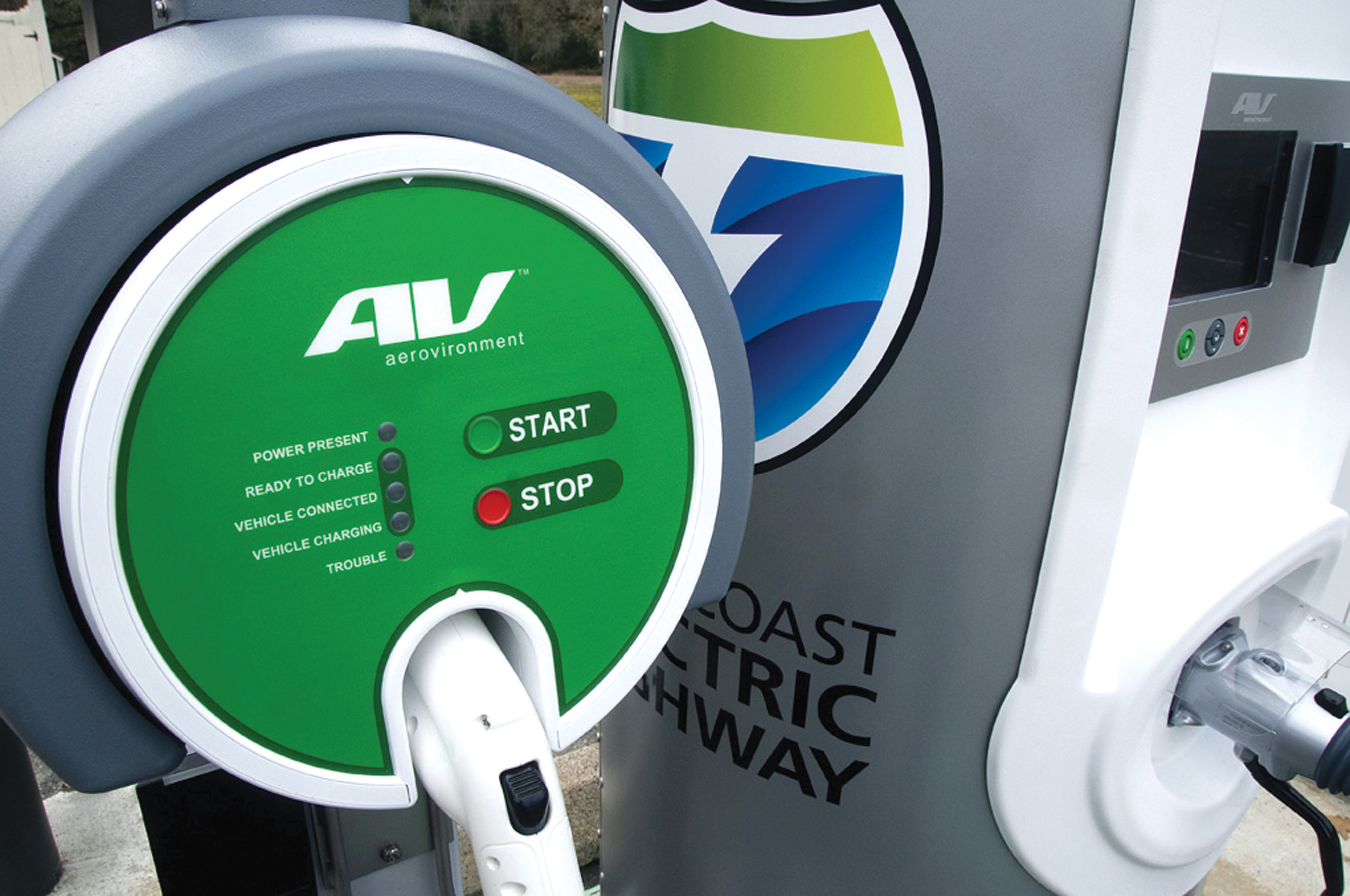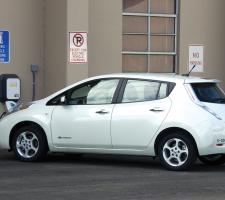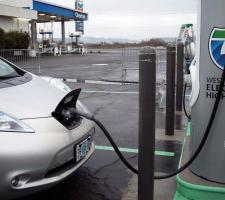
The WCEH features AeroVironment EV50 PS stations and equipment for recharging plug-in EVs not compatible with DC fast charging technology
The first section of a planned network of stations for charging electric vehicles – the West Coast Electric Highway – opened in March, promising a welcome boost to the environment and economy of Oregon. Pete Goldin reports
What should come first, the electric vehicle or the charging station? This dilemma has been hindering proliferation of ‘EVs’ in the US for years. Without a widespread and reliable infrastructure of charging stations, the American public is not likely to adopt EVs en masse. This may all be changing, however, with the opening of the first leg of the West Coast Electric Highway.Envisioned as an EV-friendly route along Interstate 5 (I-5), extending 1,300 miles down the US coast, the West Coast Electric Highway (WCEH) will provide public charging stations every 25 to 60 miles for all EV drivers. The first section of the WCEH – a 157 mile stretch of eight charging stations between Cottage Grove (just south of the city of Eugene) and Ashland, OR – was completed in March this year. Two further stations were opened in April, extending the WCEH north to Halsey and taking its total length so far to about 200 miles, covering around two thirds of I-5 in Oregon.
“It is likely that by the end of 2013, EV drivers will be able to drive and charge their vehicles all the way from Canada to the Mexican border,” says Art James, senior project executive for Office of Innovative Partnerships at the Oregon Department of Transport.
The company installing the first round of charging stations on the project is
Turning on the power
An additional 22 EV charging stations are expected to be deployed in Oregon by year end. The first 10 stations were paid for by $915,000 in American Recovery & Reinvestment Act (ARRA) funds through the Oregon Department of Energy’s State Energy Program. Additional stations will be paid for through a $2M TIGER II grant awarded by USDOT to the Oregon DOT. The TIGER II allocation requires all charging stations funded under this grant to be installed by the end of 2013. “As the first state in the nation to establish an EV charging infrastructure along a major interstate, Oregon is leading the EV pathway and supporting adoption of the next phase in the evolution of transportation,” says Pat Egan, chair of the Oregon Transportation Commission.Washington state is not far behind Oregon, with nine charging stations expected to be operational in the next few months. Most of the stations will be located north-south along I-5, although a couple will be located on east-west I-5 routes as well.
“By the end of the year, we anticipate having DC fast charging from our borders with Canada and Oregon, covering 276 miles of I-5,” says Washington State DOT project development and communications manager Tonia Buell.
The next set of charging stations, including segments of the WCEH in California, are yet to be announced. Meanwhile, other initiatives such as ‘The EV Project’ are deploying charging stations in other parts of the west coast states.
Coastal collaboration
The governors of California, Oregon and Washington, and the premier of British Columbia all signed an agreement in 2010, entitled Action Plan on Innovation, the Environment and the Economy. One of the key points of the agreement was the designation of a ‘Pacific Green Highway’, now called the West Coast Electric Highway.“The Oregon and Washington DOTs have worked together to ensure that the electric highway experience is similar in both states with consistent signage and equipment,” says Buell.
The two states conducted separate requests for proposals, but both Oregon and Washington independently chose California-based AeroVironment to supply and install the first phase of charging stations.
The WCEH has been equipped with AeroVironment EV50 PS fast charging stations compliant with the CHAdeMO charging standard used by Japanese EV manufacturers such as
Fast charging
As well as the challenge of providing charging infrastructure, there is the issue of the time it takes to charge an EV. The WCEH overcomes this with DC fast charging stations – 480Volt three phase connections that allow drivers to recharge electric vehicles such as the Nissan Leaf and Mitsubishi iMiEV in 30 minutes or less, according to promotional materials.The reality is that bringing an EV up to 80% charged is fast, possibly as quick as 26 minutes, but charging the remainder to reach 100% can take much longer – almost as long as the first 80%, says Helsel.
She also points out that most EV drivers are not going to wait until the battery is fully depleted before charging. Typical EV drivers are expected to stop more often, coordinating their vehicle recharging with other activities such as dining or shopping. “You have to think about this differently than a traditional car,” Helsel explains. “With relatively few fast charging stations, EV drivers have to be more deliberate about planning for recharging.”
Driving free
One of the strongest attractions to the WCEH is the fact that charging stations can be used for free, for the time being anyway. EV drivers can activate access to the charging stations by signing up for AeroVironment’s Charging Network atAeroVironment currently pays for all electricity used. The company will eventually charge for the service, but no decision has been made on when this will start, or what the cost will be, Helsel reports.
Even when EV drivers start paying for recharging, however, the cost to drive the length of the west coast in an EV is expected to be considerably less than a traditional car with a gas engine, even though there are some variables that will impact the cost.
It has been proven that recharging with a home charger is significantly cheaper than gas. With public chargers, however, factors such as charging station operators’ fees and local competition will come into play.
Opening the road to EVs
Aside from the potential cost advantages and obvious environmental benefits of electric vehicles, the WCEH is expected to provide an economic boost to Pacific coast states. “The most compelling argument for the WCEH is that Oregonians spend about $7Bn every year outside the state on petroleum products,” says Art James of Oregon DOT. “If we can replace a good portion of that with state produced electricity, that is money that will stay in Oregon and help fuel its economy.”It is no coincidence that the first two states providing EV charging stations on an interstate highway are Washington and Oregon, states with two of the strongest reputations for environmental protection and reform. But deployment of the first charging stations on an interstate highway is a real game-changer. All of the options being considered – from the business model for revenue from recharging, to the concept of keeping money in the state – shows that what started out as a green initiative could end up being very big business.
The bottom line is that the opening of the WCEH represents much more than a handful of charging stations. This could be the beginning of a real EV charging infrastructure in the US, changing the face of American transportation. Whether the WCEH is the spark to ignite an emerging EV culture in the US remains to be seen, but it is clearly a step in the right direction.
“The purpose of this project is to advance the adoption of electric vehicles,” Tonia Buell concludes. “The West Coast Electric Highway is about connecting communities and letting EV drivers know that they will be able to drive farther. It opens up the road for EVs.”







